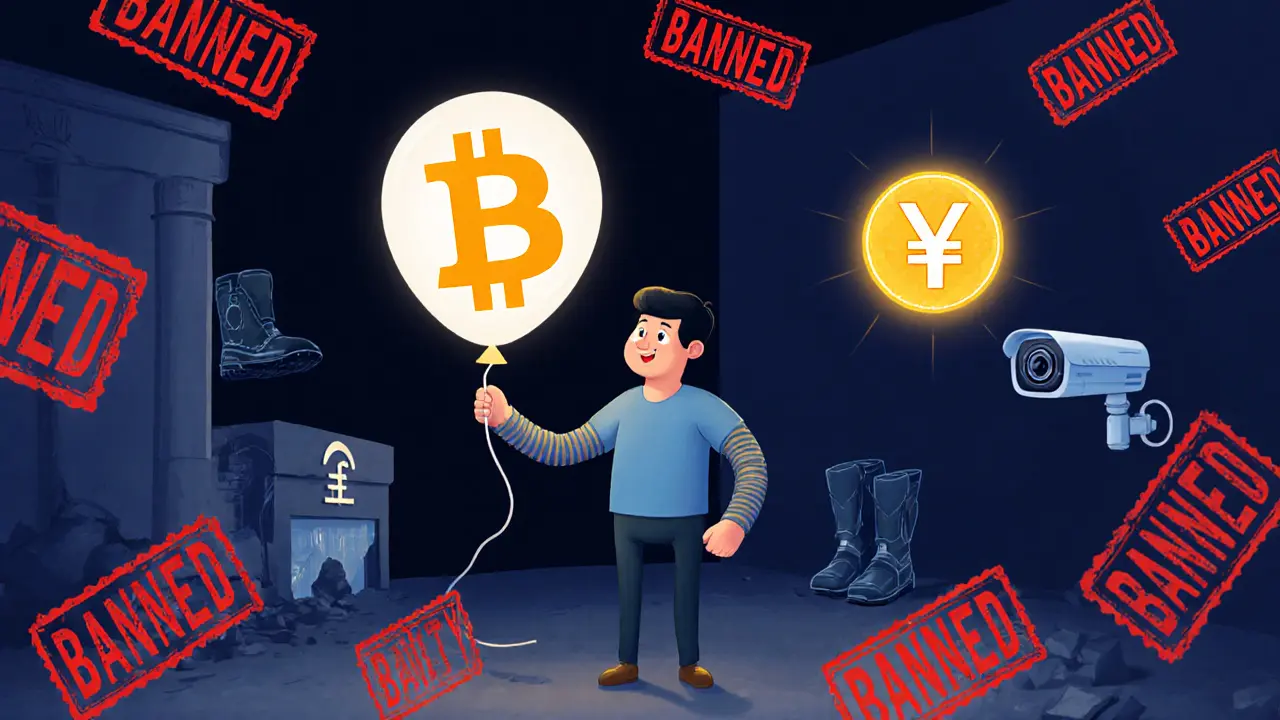China crypto ban: What it means for traders, miners, and Web3 users
When China enforced its China crypto ban, a complete prohibition on all cryptocurrency activities including trading, mining, and ownership. Also known as crypto prohibition in China, it wasn’t just a regulation—it was an erasure. No licenses, no exchanges, no wallets protected by law. If you held crypto in China after 2021, you held it at your own risk.
This ban didn’t just affect individuals. It killed the world’s largest crypto mining industry overnight. Data centers in Sichuan and Inner Mongolia, once powered by cheap hydroelectricity, were shut down or relocated. Miners didn’t get warnings—they got power cuts and police raids. Meanwhile, the digital yuan, China’s state-controlled central bank digital currency (CBDC). Also known as e-CNY, it was built to replace cash and track every transaction—exactly the opposite of Bitcoin’s anonymity. While the world debated DeFi and privacy, China was building a financial system where every payment is monitored, approved, and recorded. The crypto mining China, the once-dominant global hub for Bitcoin mining. Also known as Chinese mining operations, it’s now a ghost town—replaced by AI data centers and state-backed tech projects.
For traders, the ban meant no Binance, no OKX, no Huobi—no local exchanges, no fiat on-ramps. Chinese users didn’t just lose access—they lost legal recourse. If you got scammed, there was no regulator to call. If your exchange vanished, your funds were gone for good. Even foreigners living in China found their bank accounts frozen for sending crypto to overseas wallets. The crypto trading China, a market that once accounted for over 70% of global Bitcoin volume. Also known as China’s crypto market, it didn’t fade—it was deleted.
And yet, the ban didn’t stop crypto. It just pushed it underground. P2P markets exploded. WeChat and Telegram became the new exchanges. People used VPNs, foreign IDs, and offshore wallets to keep trading. But every transaction carried risk—no legal protection, no recourse, no safety net. The China crypto ban wasn’t about controlling finance. It was about control itself. The state didn’t want competition. It wanted the ledger.
What’s left today? A quiet but persistent underground. A few traders still move crypto through trusted networks. Miners operate in remote provinces under the radar. And the digital yuan rolls out in every city, every store, every mobile app. You won’t find a single article from a Chinese government site calling crypto "innovative." But you’ll find dozens of warnings about fraud, speculation, and financial risk—every single one tied to the same message: crypto is illegal, and you’re on your own.
Below, you’ll find real stories, breakdowns, and warnings from people who lived through it—from the miners who lost everything to the traders who found ways to survive. No fluff. No guesses. Just what happened, what’s still happening, and what you need to know if you’re anywhere near this space.
Chinese banks completely block crypto-to-fiat withdrawals. Attempts to cash out cryptocurrency through banks trigger automatic freezes, investigations, and penalties. The system is designed to stop you - not help you.
China's crypto ban blocks all trading, mining, and exchange of Bitcoin. Holders can own it, but can't use it legally. Banks freeze accounts, mining is shut down, and the digital yuan is the government's real focus.

